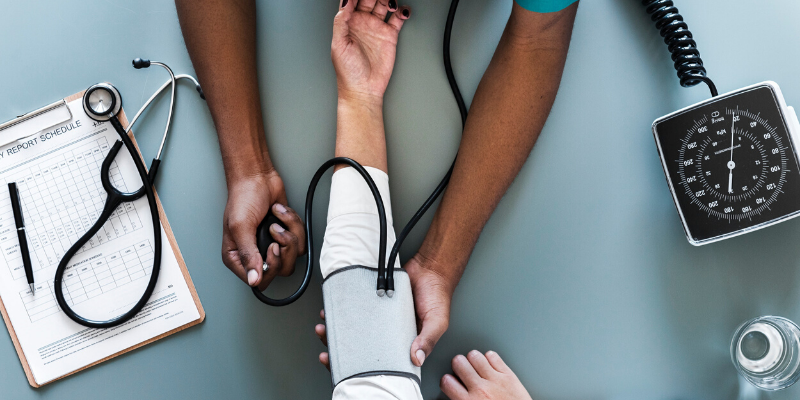Posted On: May 20, 2020 by NARA in: Best Practices General Physical Therapy

Every May, doctors, nurses and therapists around the world promote the importance of blood pressure. Specifically, it’s important to learn the signs and risks of hypertension. Signs of hypertension can often go unnoticed which increases the chances of stroke and heart attack. We all know that you know how to take blood pressure readings, but today we’re going to focus on why it’s so important.
First, cardiovascular disease remains the number one cause of death in Americans. Hypertension is known to be a factor in both cardiovascular and kidney disease. Noting the statistics of hypertension is important:
-
Prehypertension falls in a range of 120/139/80-89mmHg
-
25% of adults are pre-hypertensive
-
Men lead women in cases of hypertension until the ages of 65-74 when women take the lead
-
Caucasian and African Americans have more cases than Hispanics overall
Knowing these statistics will be helpful in improving your overall awareness of hypertension as well as identifying undiagnosed cases. This not only will help you be a better provider, but it will place you into the category of preventative health management. Here are a couple of ways to improve your blood pressure routine:
-
Double-check your blood pressure taking skills. Make sure your patient has their feet planted on the floor and their legs and arms should be uncrossed. The arm should be placed in full extension to allow the brachial artery to be closest to the surface of the skin. This will allow you to better hear Korotkoff sounds.
-
Make sure your manual cuff has been calibrated and maintained. Ideally, your cuff should be calibrated every six months but no less than once every two years. Note: A read on your cuff of +/- 3mmHg compared to the calibration tool indicates that your cuff is miscalibrated.
-
Always check that you are using the correct cuff for your client. Common procedures call for a cuff that covers 40% of the total circumference of the upper arm and around 80% of the distance measured between the elbow and shoulder.
This month, and every month, make sure you are taking your patient’s blood pressure. It’s vital to their health and their success as your patient. Hypertension is a serious disease that can be tracked to prevent issues from happening or increasing. For more information, be sure to visit the CDC’s website here.

0 comments